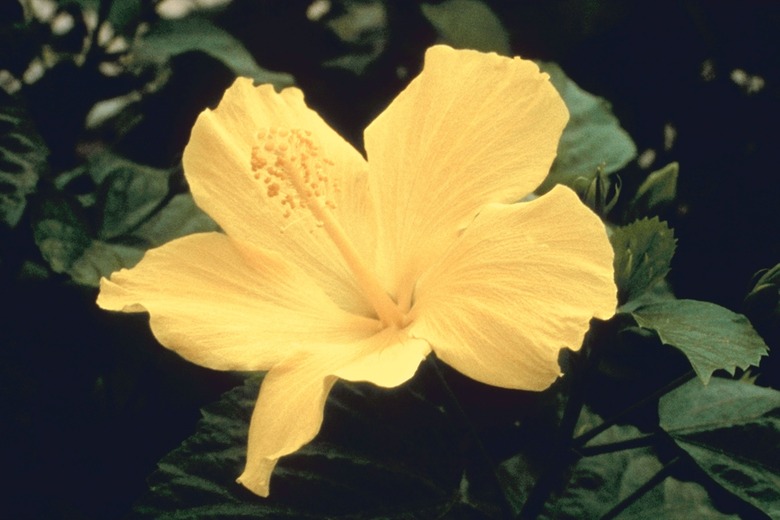My Hibscus Leaves Are Turning Yellow & Curling Up
Hibiscuses are tropical shrubs best known for their bright, colorful blooms in shades of pink, red, yellow and orange. These shrubs thrive in warm climates and generally bloom all year. While hibiscuses are generally healthy, they are susceptible to infestations of aphids, which can cause yellow leaves that curl and twist.
Identification
Aphids are common hibiscus pests. These tiny insects are usually black, brown, pink or red and are most often seen underneath hibiscus leaves. Aphids are pear-shaped and have soft bodies that do not exceed 1/8 inches in length. Some aphids have wings, and some are wingless. All aphids have a slender antennae near their abdomen.
- Hibiscuses are tropical shrubs best known for their bright, colorful blooms in shades of pink, red, yellow and orange.
- These tiny insects are usually black, brown, pink or red and are most often seen underneath hibiscus leaves.
Signs and Symptoms
Hibiscuses with aphid infestations often develop uneven, curled leaves. Tender new shoots and buds are favored by aphids and infested shrubs eventually develop yellowed leaves. Aphids multiply rapidly, removing plant sap from hibiscus leaves while they feed. After large amounts of sap are consumed, aphids produce a substance known as honeydew, which causes sooty mold fungi to adhere to the hibiscus. Sooty mold fungi is black and crusty and causes hibiscus to become unsightly. Hibiscuses with aphid feeding often develop stunted growth and reduced vigor.
Cultural Control
Rinsing aphids from your hibiscus with a stream of water from your garden hose is an effective means of control. Water rinses knock aphids from infested plants, reducing their numbers. If aphids are low in number, you can remove them with a cotton ball placed in rubbing alcohol. Use the cotton ball to remove aphids from infested leaves and stems. A variety of predatory insects feed on aphids and keep them under control. Lady beetles are one beneficial insect that feeds on aphids.
- Hibiscuses with aphid infestations often develop uneven, curled leaves.
- Water rinses knock aphids from infested plants, reducing their numbers.
Chemical Control Methods
Hibiscuses suffering severe leaf yellowing and curling may require chemical control products to reduce damage. Horticultural oils and insecticidal soaps are often used to control aphids. These products must come into contact with aphids to kill them. Always test any product on a small portion of your hibiscus before applying it all over. If no adverse effects are visible after seven days, it is safe to use the product on your hibiscus. If beneficial insects are feeding on aphids, avoid using any form of pesticide because these products will kill beneficial insects as well as aphids.
